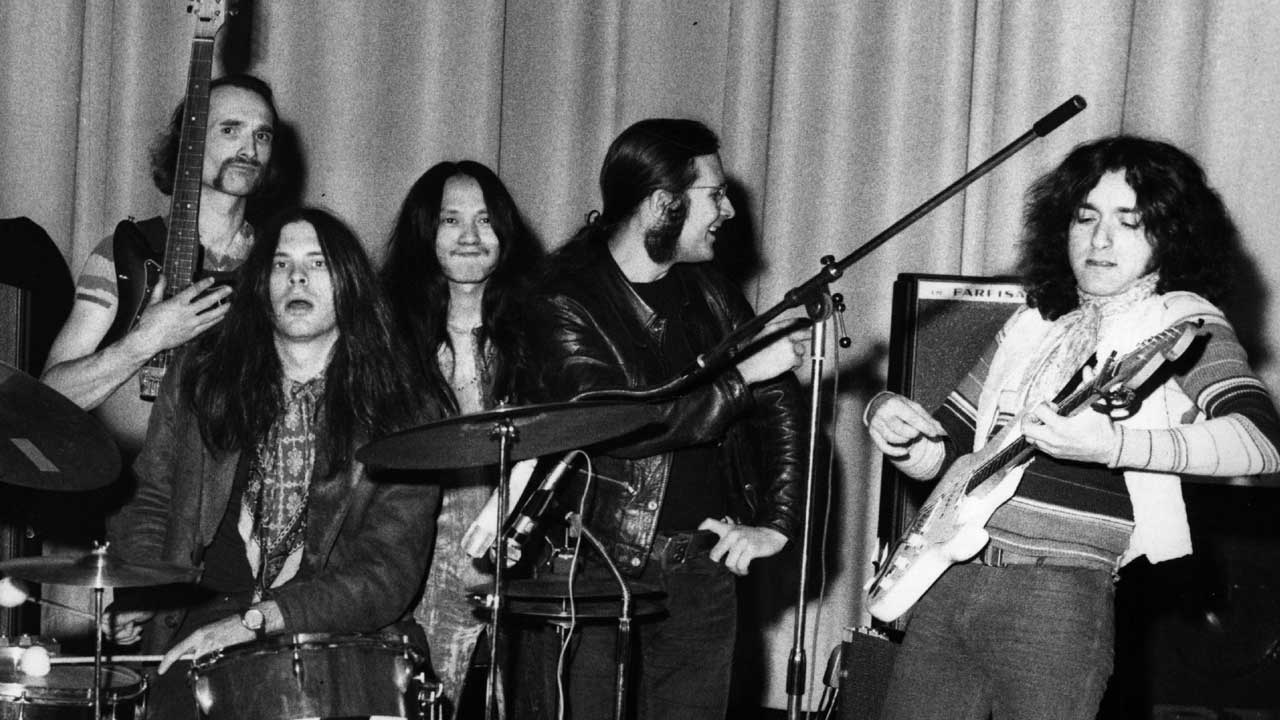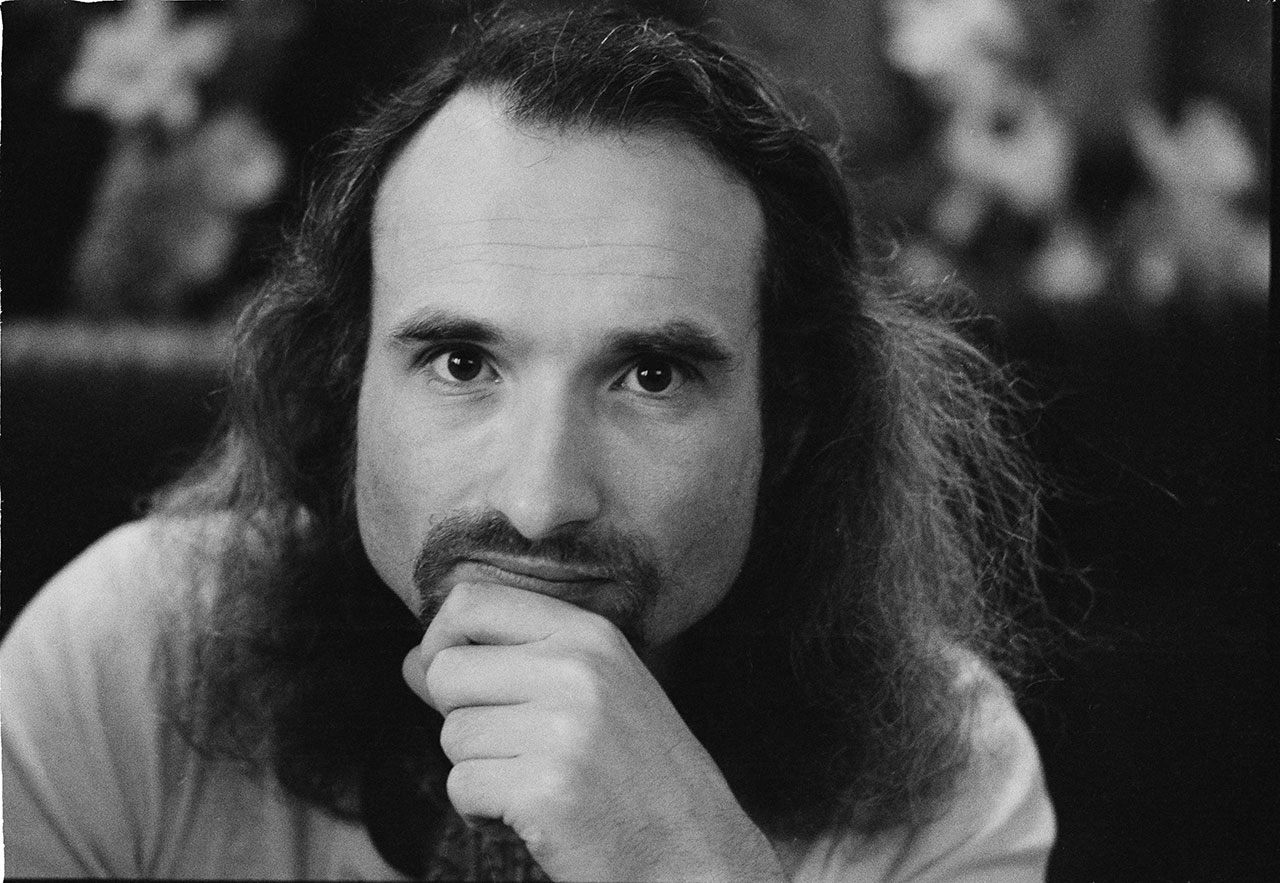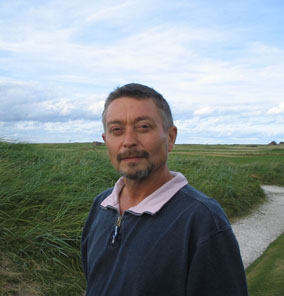Broken bones, acid-fried sessions and terrified actors: the making of Can's Tago Mago
In the heady days of 1971, German experimentalists Can pushed the musical envelope to the furthest fringes with their landmark album Tago Mago

Summer 1971. The five members of Can are huddled around a bottle of wine and a stereo suitcase Revox A77 tape recorder, listening back to the final sessions for their new album. They have been recording in a room in the west wing of the Schloss Nörvenich, a fabulously baroque 15th-century castle in Düren, a few miles outside Cologne, and soon they will have to deliver the tapes to their label, United Artists.
For the Can men, this is a poignant moment. Their year-long, rent-free run of the castle courtesy of a wealthy art collector called Herr Vohwinkel has ended, and they will soon move into a disused cinema near Cologne. The new album – which follows their 1969 debut Monster Movie and the following year’s stop-gap compilation album Soundtracks – sounds pretty good to Holger Czukay, the band’s bassist.
“We abandoned the obvious rock structures of Monster Movie and used effects, radical rhythms and funk,” Czukay says today. “It wasn’t supposed to be the German avant-garde-meets-rock. That wasn’t our intention. We wanted to sell a lot of records.”
Despite his protestations, the album sounds like nothing else. A mix of progressive noise, collaged soundscapes, trance-like grooves and schizophrenic vocals are spread across its two discs. A pair of songs, the mantric Halleluhwah and the free-floating Aumgn, take up a full, endurance-testing side of vinyl each.
But what’s the record to be called? Back in the castle, keyboard player Irmin Schmidt has been talking of “witchy surprisings”, which suits the mood of the album. Guitarist Michael Karoli vetoes that. Drummer Jaki Liebezeit raps on a tom-tom.
“How about Tago Mago?” he says. “You remember? That rock I told you about off the coast of Ibiza when I was playing with Chet Baker in Barcelona in 1963?”
It’s a surprising suggestion. Czukay and Schmidt have both heard the drummer talk of his time spent at the Jamboree cellar club in the Catalonian city, and heard him mention Isla de Tagomago, a private island associated with infamous occultist Aleister Crowley. While the album isn’t directly inspired by either Crowley or his sex magick, there is one track on it, Aumgn (pronounced ‘ommm’) that is inspired by the same ancient Sanskrit mysteries beloved of The Great Beast himself.
Sign up below to get the latest from Classic Rock, plus exclusive special offers, direct to your inbox!
The title Tago Mago fits, but Czukay has his doubts. “Jaki always told me he was so utterly depressed playing with Chet Baker, because of Baker’s drug problems [the legendary jazz trumpet player/singer was strung out on Palfium, an opiate three times stronger than morphine],” the bassist says now. “In fact he was very interested in learning how to die. He rented a place on Tagomago, and every day he wanted to commit suicide by jumping off the rock into the sea. Good news for him, he didn’t. Good news for Can.”
Even by the standards of the late 60s and early 70s, Can weren’t your average band. The psych-rock extravaganza of debut Monster Movie saw them compared to Pink Floyd, The Doors and the Velvet Underground. But Can were far more experimental than all of those, especially after Japanese vocalist Damo Suzuki joined in 1970. They sounded utterly alien – a new Germanic concept where Teutonic soul met Miles Davis and then went haywire, thanks to madman-wizard Schmidt’s doom-laden keyboards and the way Suzuki switched from an eerie whisper to a nasty shriek.
Can formed in Cologne in 1968. Schmidt, Czukay and Liebezeit were veterans of Germany’s modern classical and free jazz scenes; all three were in their 30s. Karoli was 22, while at 21, Suzuki was the baby of the band. The latter was a replacement for their original singer, American artist Malcolm Mooney, who was forced out of the band in 1970 following a gig at an art auction in Munich where he sold off the exhibits for small change and subsequently ended up on the Swiss border, a certifiable wreck.
Jaki Liebezeit was the heartbeat of Can, a drummer described as “half-man, half-machine”. Born in Dresden in 1939, he survived the 1945 firestorm bombing of the city by the British in which more than 20,000 people died. His surname translates colloquially as ‘what’s the time?’ – apt for a man whose obsessions were jazz drummers Max Roach, Elvin Jones and Art Blakey and funkmeister Clyde Stubblefield. It was Liebezeit, along with Mooney, who came up with the band’s ‘pop art’ name (although for a while they called themselves The Can). A shy man, Liebezeit rarely talks to the press; he consented to this interview only at the eleventh hour. He’s modest when pressed about his uniquely metronomic style. “Call me a bio-machine if you want,” he says with a shrug.
Holger Czukay is Can’s archivist and the band’s most eccentric member. The bassist begins his interview by singing an impromptu song, and later becomes so emotional that he has to interrupt his reminiscences three times. But his musical memory is intact. “My bass playing was influenced by [James Brown sideman] Bootsy Collins, but I couldn’t play that way.”
Like Czukay, Can keyboard player Irmin Schmidt studied with avant-garde classicist Karlheinz Stockhausen. Schmidt hung out with the New York art set in the mid-60s, watching avant-gardists like John Cale, Terry Riley, La Monte Young, and Andy Warhol’s Chelsea Girls. But it wasn’t all experimental. “I loved The Doors and liked the Velvets,” Schmidt. recalls. “But we listened to more Sly Stone than anything.”
Each member of Can brought something different to the mix: Liebezeit’s love of jazz and Afro-beat; Czukay’s interest in music from Thailand and Bali; the music from Japan that interested Schmidt; Karoli’s fondness for Otis Redding and James Brown; Suzuki’s liking for writing and singing in what he called “the language of the Stone Age”. The resulting mix took in the avant-garde and the mainstream; rock, jazz, funk and an early form of world music.
“The truth of Tago Mago is this: we had no commercial ideas and we weren’t obligated to anyone,” explains Liebezeit. “We felt so free back then. We weren’t trying to please anybody.”
Can started work on Tago Mago at Schloss Nörvenich in early 1971. They may have smoked plenty of dope, but recording was a serious business. They weren’t the only creative types hanging out in the castle, either – others included sculptor Ulrich Rückriem, flamboyant abstract painter Blinky Palermo, and artist Ulrich Eichenberger, who created Tago Mago’s ‘vomiting head’ cover artwork. “We weren’t a commune,” says Czukay. “We spent so much time in the studio that I had to go home to live some life.”
Sessions for the album would last for 16 hours a day. They had what Czukay calls “the perfect reverberation room” – a 40-square-metre chamber lined with cardboard egg cartons stuck on the wall by the band. “They didn’t help acoustically,” says the bassist, “but we pretended they did.” But their forward-looking musical vision wasn’t matched by their primitive equipment. They laid down basic tracks using a pair of two-track tape recorders. They had just three microphones, shared between Liebezeit and Suzuki. There was no mixing console. “Everything bled,” says Czukay, who recorded the album. “Balance was difficult. But the album has amazing acoustic qualities, even if the sound quality is junk.”
Sessions were free-form and anarchistic. Traditional songwriting methods were jettisoned in favour of “freaking out, with subtle mixing later”. Aumgn and Peking O were a mixture of spontaneous jams and musical montage. Other songs, like Mushroom, were more precise, thanks in part to Suzuki’s haiku-like lyrics. “It was a complicated construction process,” says Schmidt. “Not like performing a three-minute pop song. Of course, you have to know when to stop – and that was a five-way discussion. We had a lot of fights.”
Aumgn was the perfect example of this unique approach. Rather than use keyboards, Schmidt experimented with sine-wave generators and oscillators. But that wasn’t all that made Aumgn so odd. Czukay recorded Schmidt smashing up a chair with tom-tom mallets while he was tripping. The bassist kept the tapes rolling when a small boy living upstairs burst into the studio and started shouting, thinking a party was in progress. If that wasn’t chaotic enough, a black hound belonging to the castle’s owner, Herr Vohwinkel, entered the fray and added his howling to the mix.
After three months the album was finally finished and the band moved out of the castle. Czukay took away hundreds of hours of quarter- inch tapes, including jam sessions he had secretly recorded while the band were trying to sort out various technical problems, and assembled them into a “collage” in his Cologne flat.
Meanwhile, Schmidt and his wife Hildegard took care of the organisational side of things. Mrs Schmidt was a formidable woman. She had already seen off Can’s original manager, Abi Ofarim, formerly of novelty 60s duo Esther And Abi. It was Hildegard who insisted they release Tago Mago as a double album. If the band had had their own way, it would have been a single disc, without Aumgn, Peking O and jokey closing track Bring Me Coffee Or Tea.
“I guess it was avant-garde,” says Jaki Liebezeit. “But we didn’t know that then.”
Andrew Lauder was the manager of Can’s label, United Artists, whose offices were underneath a notorious clap clinic in central London. He had heard Monster Movie in 1969, and persuaded his boss, Martin Davis, to release it at once. “We’d already got [fellow German band] Amon Düül II signed, and the German office in Munich was putting out interesting stuff,” he recalls. “I put the first Can record on the turntable and thought: ‘This is brilliant!’ I didn’t know what I was expecting, but I wasn’t expecting that.”
Lauder loved Tago Mago. “An incredible record,” he says. “We were a bit worried after Malcolm Mooney left: ‘You’ve changed your singer already?’ When we met Damo we stopped worrying, because they’d got someone even more interesting. To have a Japanese guy singing in German, English and Japanese was pretty off-the-wall. I never worked out what the songs meant. It was all about the sound.”
Born in 1950 in Osio, a small city near Yokohama, Kenji ‘Damo’ Suzuki was the perfect fit for Can. He got his nickname, aged 15, from the Japanese comic book Marude Dameo. “He’s a Japanese Charlie Brown who likes to make everything good, but it all goes wrong,” the singer explained. “He’s like a ‘mistake-kid’. ‘Dame’ means mistake. I didn’t like it, but I used it.”
Growing up near a US army base, the young Damo’s early musical influences came from the forces radio that entertained the troops – soul records on Atlantic, Stax and Motown. He would sing along in his own made-up language to hits by the likes of the Temptations and Aretha Franklin.
In the late 60s, he decided to visit Dublin. Taking just a rucksack, he travelled through Siberia and Russia and Poland, before heading south to Munich. Czukay and Liebezeit were drinking coffee at a table outside a local bar in the German city when they spotted this peculiar little Japanese man walking across a four-lane road, singing at the top of his voice.
“It sounded like he was singing but maybe he was praying,” Czukay recalls. “I said to Jaki: ‘That’s our next singer.’ He replied: ‘How do you know?’ He was exactly what we needed. He wasn’t even playing a guitar; he just let his soul go. I invited him over and asked him would he join us. He said okay.”
Suzuki’s first performance as Can’s singer came just a few hours later. The band were playing a packed disco called Blow-up. Damo started off by murmuring like a meditating monk, then suddenly turned into what Czukay describes as “a fighting samurai”. The audience was shocked, and many of them quickly left the hall. Among them was upper-crust British actor David Niven.
It was this surreal, confrontational edge that set Can even further apart from their contemporaries. “He was great for us,” says Czukay. “He was good at playful humour. The song Bring Me Coffee Or Tea was typical of him, just taking the piss. ‘Tea? Coffee? I don’t really care.’”
Suzuki left Can in 1973 after marrying a Jehovah’s Witness from Munich. “Suddenly he wasn’t allowed to drink alcohol or to take drugs,” recalls Czukay. “He completely changed his lifestyle and got a hotel job.” The singer refused to be interviewed for this article, although he sent an email: “Sorry I have no interest to talk about that project of 40 years ago and I’m not interested to be involved. I’m living today and I’ve much exciting project in this century. Energy.” Further requests were met with silence.

To get word of the Tago Mago album out amid the musical and artistic free-for-all of 1971, United Artists commissioned Duncan Fallowell, a 21-year-old rock critic on the Spectator, to write liner notes. The album was serviced to the underground press, and progressive DJs such as Andy Dunkley, Jeff Dexter and Jerry Floyd, who played it before shows by the likes of Hawkwind, Pink Fairies and CCS.
Even next to those bands Can were revolutionary, and Tago Mago instantly became a name to drop in artier circles. The record could be heard blasting out of the hipper import stores – Harlequin and One Stop in Soho, and the brand new Virgin shop on Oxford Street.
Shortly after the release of Tago Mago, Can played their first UK show – an all-nighter at Imperial College, London. “The band just stood there with very little show and no effects,” Lauder recalls. “But Damo was an interesting-looking guy anyway.”
They returned to the UK for a tour at the end of 1971, which provoked some bizarre reactions. At a gig in Glasgow an enthusiastic fan jumped on stage and hugged Irmin Schmidt. “He broke my rib,” he says. “All that mattered was that people liked Can.”
By the time Can came back in 1972 their star was at its highest. David Bowie, some Rolling Stones and a young John Lydon saw their show at London University. “John Lydon says it changed his life,” says Czukay. “So we even influenced punk.”
That candle still burns for Lydon today. “Tago Mago is a stunning album,” says the singer. “In particular Halleluhwah, which lasts an entire side.” In subsequent years Tago Mago would influence, among countless others, Julian Cope, Primal Scream and the Flaming Lips.
When asked to describe Can’s music, Michael Karoli – who died of cancer in 2001 – once replied: “I’ve never liked to be forced to describe the kind of music I create. Is it rock’n’roll? I suppose that depends on how you define that term. If you consider Captain Beefheart to be rock’n’roll, or Miles Davis, okay, I play rock’n’roll.”
Irmin Schmidt is more succinct: “Tago Mago was our best-selling record, the most astonishing, mysterious record.”
“Can were a psychedelic band on a different plane,” says Andrew Lauder. “They were mischievous in a made-in-Germany kind of way. I wish I’d found out more about them then. But I think it’s taken this long for people to get to terms with them now.”
This feature originally appeared in issue 160 of Classic Rock magazine, in June 2011.
Max Bell worked for the NME during the golden 70s era before running up and down London’s Fleet Street for The Times and all the other hot-metal dailies. A long stint at the Standard and mags like The Face and GQ kept him honest. Later, Record Collector and Classic Rock called.

